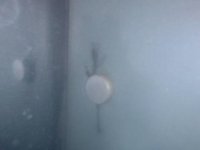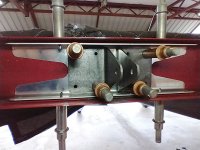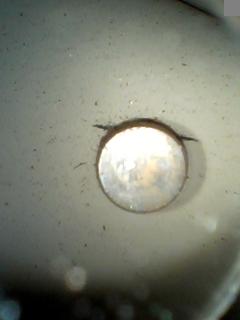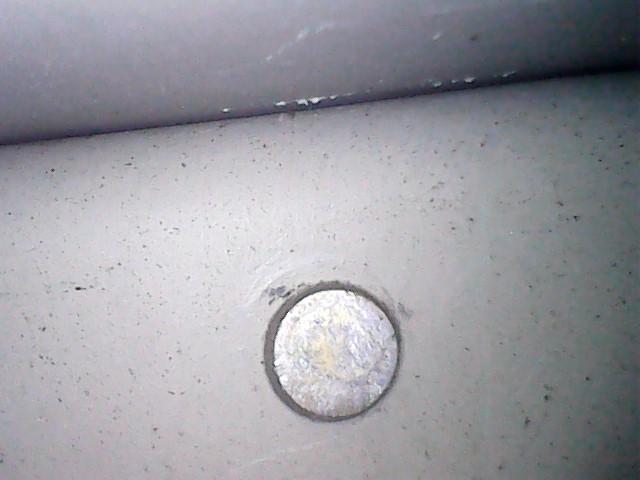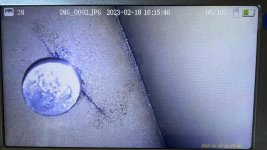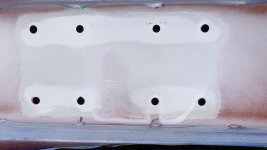I think I can make a case for this.
As the rivet is being squeezed, it initially swells to fill the hole, tight. That process is fairly uniform along the length of the rivet. Then, the final squeeze to form the shop head focuses additional hoop stress (tension in a circumferential direction around the hole) locally near the face where the shop head is forming. This leaves a residual tensile stress surrounding the hole, locally right on the surface under the shop head.
Most applications have rivets loaded only, or predominantly, in shear, and this small stress increase doesn't matter. In some cases the residual tensile preload may actually be beneficial. So, in general practice, the rivet orientation probably doesn't matter.
But, In the case of the rivets holding the hinge brackets on, there is a significant cycling of tension in the rivets. A vertical (upward) load on the hinge bolt produces a moment that is reacted as a combination of contact pressure on the face area above the hinge axis, and a tension in the rivets below the hinge axis. Similarly a downward vertical load on the hinge produces a moment that is reacted as a combination of contact pressure on the face area below the hinge axis, and tension in the rivets above the hinge axis. This tension is over and above the vertical shear that is shared among all the rivets in both directions.
So, any vibration that produces alternating vertical load on the elevator mass produces cyclic tension loading and unloading in the rivets. The rivet head (shop or manufactured) carries that tension load into the spar as a cyclic local deformation of the spar material around the rivet head. This will eventually cause a fatigue crack. Having the initial tensile hoop stress around the hole will likely cause the fatigue crack to start sooner.
Remember, aluminum does not have an endurance limit, meaning that there is no minimum stress threshold below which fatigue will not occur. In aluminum, any cyclic deformation will eventually cause a fatigue crack. For low stress, it may be trillions of cycles. For higher stresses, it takes fewer cycles.
If the stress levels are such that sometimes fatigue cracks appear after a few thousand hours of service with certain service exposures (higher horsepower, lots of dirt landings, aerobatics, out of balance propeller, whatever), then the spectrum of which particular conditions may cause cracks to show up sooner is certainly influenced by the small residual stress distribution in the spar material around the shop head. But it is also likely that given enough service exposure, examples with the manufactured head against the spar will eventually show cracks too.



